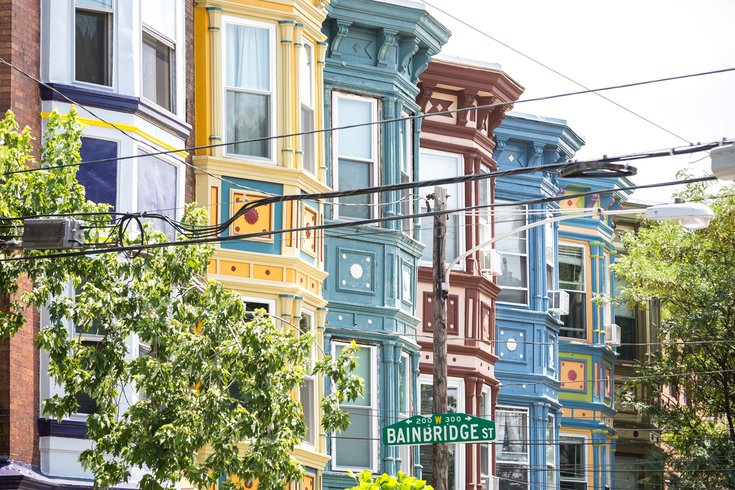
October 09, 2017
 Thom Carroll/PhillyVoice
Thom Carroll/PhillyVoice
Colorful rowhomes in Queen Village. This summer, Philadelphia received the most Airbnb guests of any other Pennsylvania county.
Suburban sprawl is an appealing landscape for many who seek open space removed from the city, but a new study argues that life in urban centers has its own health benefits – both mentally and physically – that suburbanites are missing out on.
The study, conducted out of the University of Oxford and the University of Hong Kong, looked at UK biobank data regarding men and women ages 37 to 73 in 22 UK cities, which offered insight into not only residential density, but also body fat, obesity, and other physical health factors.
In each of the 22 cities observed, researchers found that those living in rowhouses or apartments in downtown city centers showed a lower rate of obesity and a higher rate of exercise.
Though the research was conducted in the UK, co-author Chinmoy Sarkar noted the study’s universality to other areas with vast suburban areas. One of the biggest factors for urban health, in particular, was walkability.
“As cities get more and more compact, they become more walkable,” Sarkar told Reuters.
“In denser residential areas, they are better designed and more attractive destinations. We are less dependent on our cars and use public transit more.”
Homes in neighborhoods close to highways and major roads, where driving is the single option for getting around, showed the highest rates of obesity and the lowest rates of exercise.
The lower health rates didn’t transfer to wealthier suburban areas, however. Communities that included public gardens or other open spaces were healthier than their other suburban counterparts but still lagged behind city residents.
Urban life also was associated with more community engagement and interpersonal activity.
Sarkar and his co-authors conducted the research in hopes it would cause more policymakers and politicians to promote the benefits of urban living.
"If we can convince policymakers that this is a public health opportunity, we can build well-designed communities, and in the long term you have made a big difference in health outcomes," Sarkar told Reuters.
"With evidence, we can plan multi-functional, attractive neighborhoods that promote physical activity, promote social interaction, and shield from negatives such as pollution and feeling unsafe."